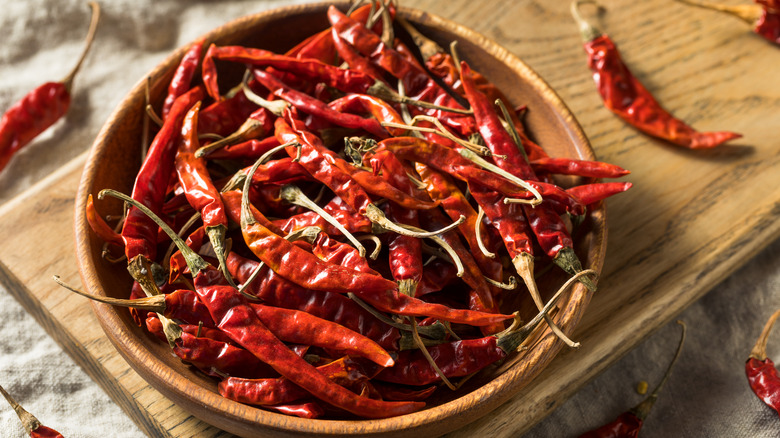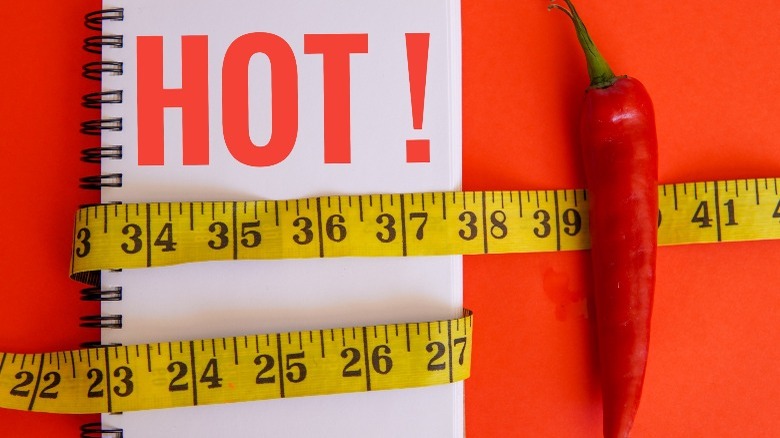What Is The Scoville Scale And How Does It Work?
Your weekend guests may have varying preferences when it comes to ingesting heat, and Scoville ratings can help you decide which sauces to leave on the shelf and which ones to bring home. If you're trying to find the hot sauce that won't burn your mouth off – or maybe that's exactly what you want – you'll need to understand what the Scoville scale represents.
No, the Scoville scale doesn't weigh chiles, nor does it measure the drops of sweat lost after ingesting spicy foods. Devised in 1912 by American pharmacologist Wilbur Scoville, the Scoville scale catalogs chiles according to their capsaicin content (via Vox).
In his experiment, Scoville set out to measure a chile's spice by feeding research participants samples of sugar water and ground pepper, gradually diluting the concoctions with water until the test subjects could no longer taste heat (per Chili Pepper Madness). It was a subjective measurement, of course, but this method came to reference Scoville Heat Units (SHU).
A measurement for heat
Today, instead of research participants inflicting damage to their innards, chiles are put through machines, and a process known as high-performance liquid chromatography can measure capsaicin levels, per The Scoville Scale. The results can be easily transferred to the well-known SHU scale.
Capsaicin, the compound responsible for heat, clocks in at 16 million SHU in its purest form, while a bell pepper is ranked at the bottom of the scale at 0 SHU, according to MasterClass. To date, the hottest recorded pepper is the reportedly lethal Carolina Reaper, falling anywhere from 1.5 million to 2.2 millions SHU. A red habanero pepper, by comparison, will land somewhere in the 100,000 – 325,000 SHU range.
Didn't quite nail the right Scoville level for your guests? Hand over a glass of milk, recommends US Dairy; the casein protein found in milk binds to fat-soluble capsaicin compounds and neutralizes heat. Be warned, however, as tolerance to capsaicin can be established; those chile-loving friends may need higher levels of SHU to notice any spicy kick (via Pepperseeds.eu).

